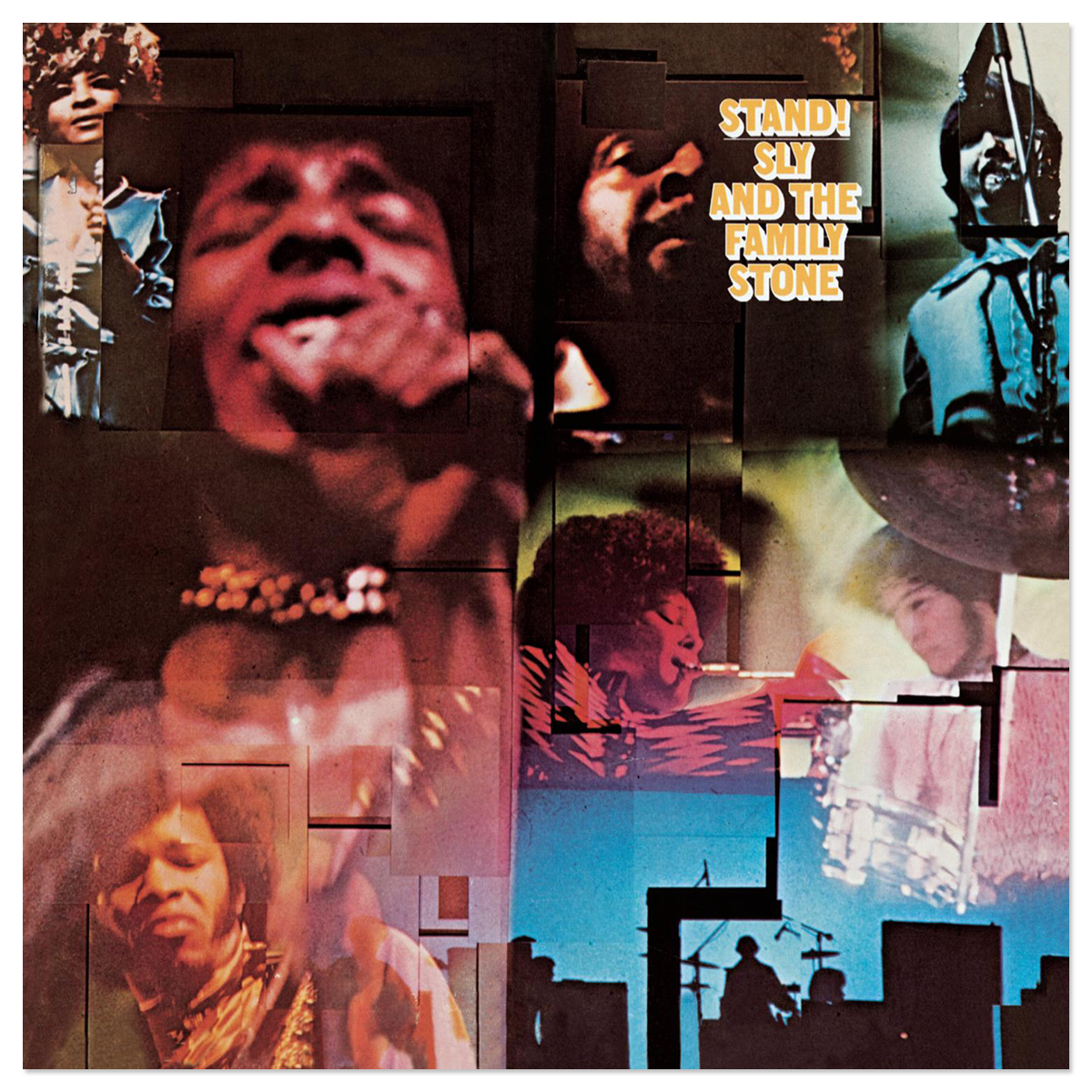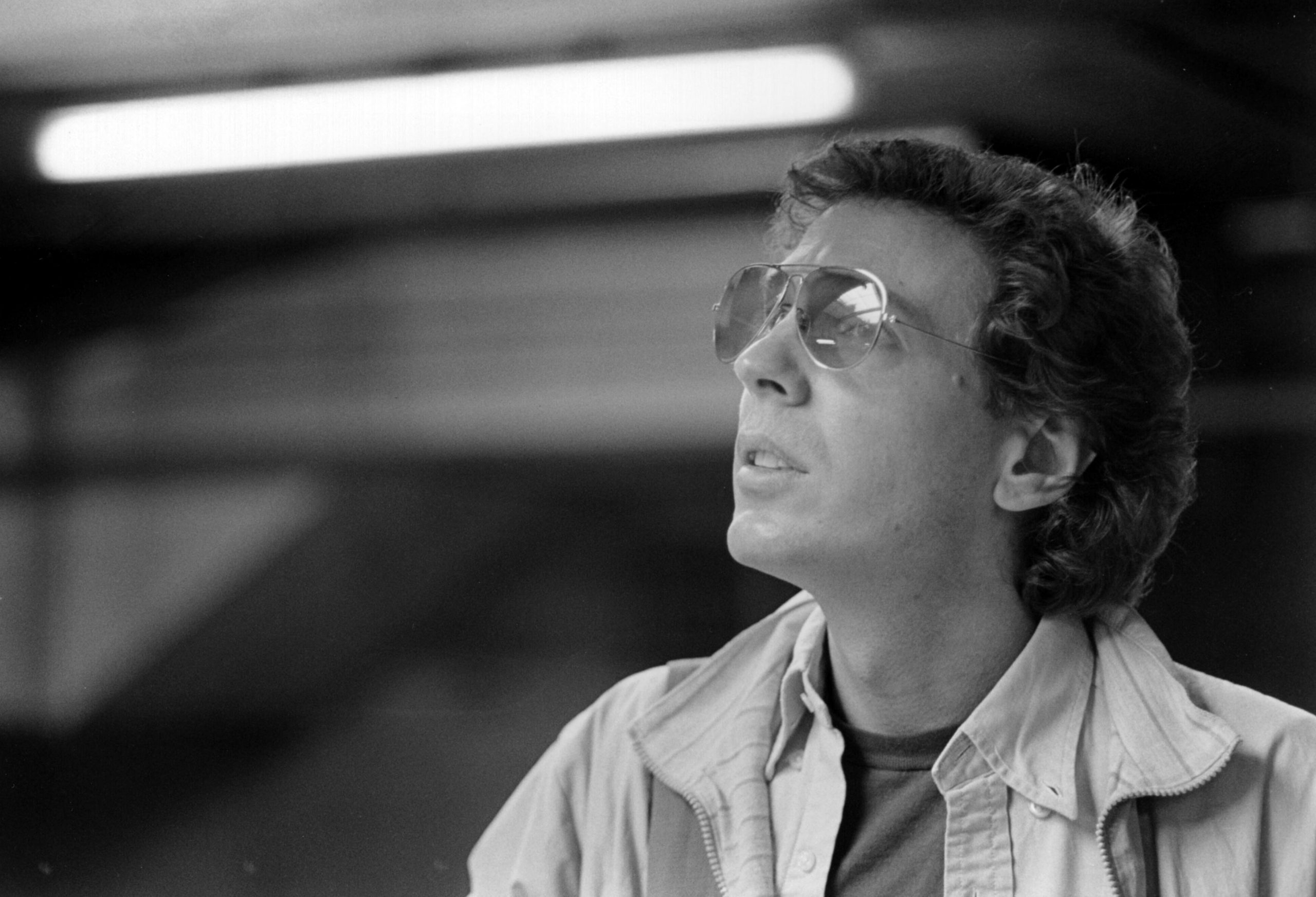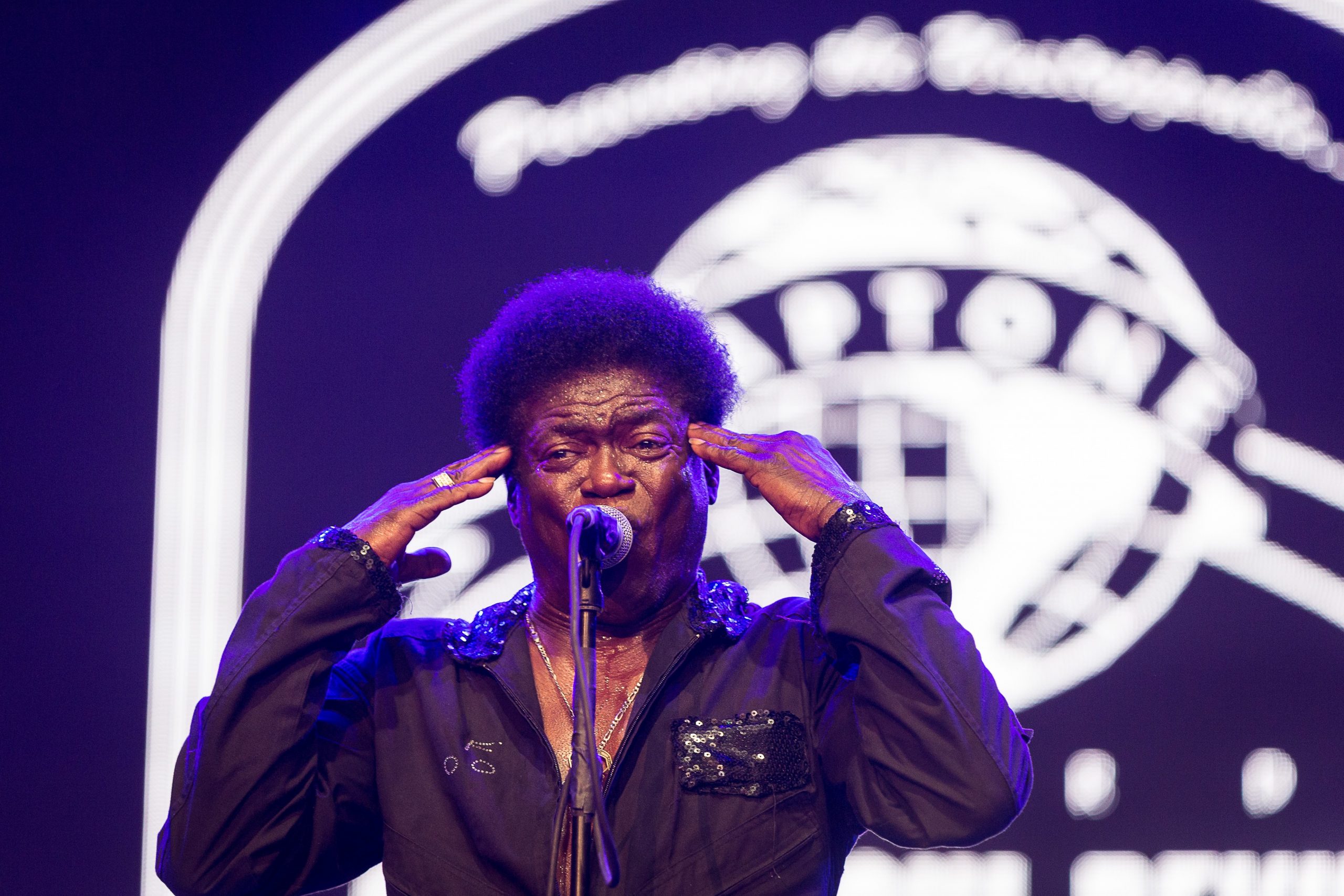Among singer-songwriters of the 1960s and '70s, Harry Nilsson may be respected, but is he famous?
It's hard to say. Two of Nilsson's most renowned performances -- "Everybody's Talkin'" and "Without You," both of which won Grammys -- were covers (of Fred Neil and Badfinger respectively). As such, he's primarily known as a singer of utmost emotional depth and vocal range. However, that assessment pays short shrift to his songwriter bonafides.
When the new Netflix series Russian Doll used 1971's "Gotta Get Up" as a recurring motif, a lot of amateur music heads started asking the same question that a documentary did at the other end of this decade: Who Is Harry Nilsson?
Russian Doll star Natasha Lyonne had a dead-on grasp of what made the musician and his career so compelling when she said his music had a "buoyant doomsday quality" in The New York Times. And for the most part, other musicians got it, too. Even when the Monkees did his songs, they were able to highlight the uncanny melancholy in Nilsson's old-timey throwback tunes.
So rounding up the best Nilsson covers is just about a fait accompli, really. Even so, if you need another angle on one of the 20th century's most enigmatic, tragic, irreverent, and remarkable pop-music artists, understanding him through the interpretations of others is one of the more fascinatingly winding routes.
The Yardbirds, "Ten Little Indians" (1967)
Nilsson's original version of this song is plenty strange -- at least on the LP version, which comes with a wild-eyed, cackling tongue-twister goof of an introduction. The rest of its structure is this odd mix of martial intensity battling with chirpy sunshine-pop chords, all for the purpose of a conceptual little ditty about the titular figures breaking all 10 of the commandments. (It sounds a bit less whimsical if you know about our old Native American boarding schools.)
That same year, the Yardbirds were en route to breaking up after their 1967 album Little Games fizzled out, while careening headlong from straight-ahead blues-rock to more experimental psychedelic ideas -- at least, when they weren't sounding kind of like the Stooges. The band picked this song as an unlikely addition to its repertoire and cobbled together a performance as a half-band effort, with guitarist Jimmy Page and singer Keith Relf the only original members on the recording. The remainder was handled by studio musicians Clem Cattini (drums) and ... huh, how about that, John Paul Jones (bass).
The arrangement is superficially similar to the original, and even with Relf's theatrically apropos lead vocal, it might sound a little out of character for the Yardbirds -- except the combination of Page's reverse-echo, multi-tracked feedback effects and Jones' orchestral arrangements come together stunningly in the last 20 seconds or so: sustained siren wails buffeted by drums that sound like blood rushing through the brain mid-panic attack.
Labi Siffre, "Maybe" (1970)
Singer-songwriter Labi Siffre seems like the kind of artist worth gravitating toward if you're into Harry Nilsson's work. I find him occasionally uneven, but when the mood's right, he's got the same notion of simple, melodic sentiment concealing more complex themes and yearning emotions, along with a similar feeling of being drastically underrated compared to what he's actually put out into the world. (He's more than a couple memorable breaks, at the absolute least.)
Siffre's debut album features this acoustic take on "Maybe," which gives the nuances of his singing voice so much breathing room that it's easy to hear it as a virtuoso performance, even though it's a subtle one. In this case, the virtuoso move is pulling off an echo of the lyrics' contradictions: of sounding wounded and hopeful, naive and self-aware, adolescent and learned, all at the same time.
Keith Moon, "Together" (1975)
On the other hand... Keith Moon was all, "hey all you other sods are putting out solo records, I wanna do one too" at the rest of the Who -- and watch the fuck out, everybody. I don't know how often the drummer going solo has ever even come close to working. Yeah, Ringo has a few decent solo singles, and braver devil's advocates than me can name more than two worthwhile Don Henley joints. But when that's the gold standard, usually the best you can hope for is a goofy fiasco, or maybe a wigged-out crossover exercise if you're lucky.
So goofy fiasco it is. The cleverness of Two Sides Of The Moon ended with its title; the rest of what you got was kinda butt, rife with doofy covers that weren't nearly as heavy as you'd hope or expect from a guy who thought explosives were an integral percussive instrument. In other words, it's what happens after four of rock's biggest party disasters -- Nilsson, Moon, John Lennon, and Ringo Starr -- all get so decadently zonked-out and fucked-up in '74 that their bad ideas actually get avalanche momentum, eventually throwing Moon from the tumult of the Pussy Cats sessions (more on that later) into another series of hubris-addled, misguided ideas.
For instance: drums? They're all well and good, but it's, you know, a day job, and Keith Moon wants to sing. Could he sing? Sure. Could he sing like Brian Wilson? What the hell good lord shit no he could not.
That was the first single. I can only assume the album just kept on getting made because of some sunk-cost fallacy business. The recording and promo budgets were enormous, and the musicians involved were the rock equivalent of the '92 Barcelona Olympic basketball Dream Team, a pile-up of session greats (Clydie King, Danny Kortchmar, Jim Keltner, Bobby Keys), famous rock 'n' roll pals (Flo & Eddie from the Turtles, Joe Walsh, John Sebastian, Ronnie Wood, the aforementioned Nilsson/Lennon/Ringo drinking buddies), and, somehow, a teenage Miguel Ferrer.
All that money and star power, and we get ... what, exactly? Keith's version of Nilsson's Aerial Ballet classic "Together," a work of foot-dragging steel-drum quasi-reggae that makes "Hotel California" sound like Linton Kwesi Johnson? Nilsson himself appears on the second verse, and even though you can tell his voice is still shot from the Pussy Cats sessions, it's somehow less cringeworthy than Keith's lead -- both of which are exponentially less embarrassing than Ringo and Keith's dopey banter before the third verse. (Which, to be fair, was dead-on in one exchange: Ringo states, "well I think we've covered it, don't you?" Keith's muttered reply: "Covered? I think we buried it.") But it's the last track on a baffling trainwreck of a record, so who even got that far?
Aimee Mann, "One" (1995)
Yes, sure: Three Dog Night. Fine. But Paul Thomas Anderson, who spent a couple movies drawing new lines of pathos from the Nilsson discography (see also: Popeye soundtrack selection "He Needs Me" in Punch-Drunk Love), was so taken by Aimee Mann's version of "One" from the 1995 tribute record For The Love Of Harry: Everybody Sings Nilsson that he used it in its entirety and then some for the tour-de-force opening montage of his 1999 epic Magnolia, and gave the rest of the soundtrack to Mann while he was at it, earning her an Oscar nomination for "Save Me."
This wasn't the first time Mann's singing voice appeared in a PTA film -- there's a snippet of 'Til Tuesday's "Voices Carry" near the end of Boogie Nights -- and it's not the last time a cover song she recorded captured the public imagination, considering her haunting take on the Cars' "Drive" for The Assassination Of Gianni Versace: American Crime Story last year.
But seeing as how Mann can sound like some kind of resonant revelation even when doing ridiculous period-piece comedy, and considering a career of songwriting that's put her in that same ballpark of hooky melancholy, it's not surprising how well she steps into Nilsson's place. Or places, plural -- there are a lot of music-geek nods to other songs of his, from the lift of Nilsson's voice ("OK Mr. Mix") from his recording of "Cuddly Toy" (first made famous by the Monkees on 1967's Pisces, Aquarius, Capricorn & Jones Ltd.) to the background singers -- Chris Difford from Squeeze and Monty Python/Bonzo Dog Doo Dah Band/Rutles -- working in lyrics from "Together" during the coda.
LCD Soundsystem, "Jump Into The Fire" (2004)
Speaking of Nilsson songs that work well in movies, here's one that's been at the top of the errand-running cocaine-paranoia hit parade since 5/11/1980. But there's a reason James Murphy and company covered this one and not, say, "Memo From Turner" or "Magic Bus," and it's not just because Nilsson might have more record-collector cool cred. It's that bassline -- courtesy of session bassist Herbie Flowers -- that makes its hyperventilating motor growl in a way that'd make Enzo Ferrari weep with envy.
First recorded on BBC Radio 1's Zane Lowe show on December 8 of 2004 and released as a B-side to the "Daft Punk Is Playing At My House" single the following February, "Jump Into The Fire" later became a staple of LCD Soundsystem concerts, including the penultimate slot of their (temporarily) final show.
But I prefer this earlier version for a number of reasons. It seems a bit more together, or at least starts a bit more together before splintering out into the garage-rock-vs.-krautrock soundclash it becomes. Also, how geeked do you think bassist Tyler Pope was to learn they were gonna play this? Because he sounds geeked. As does Nancy Whang turning the organ into a percussion instrument, and Patrick Mahoney turning his percussion instrument into a doomsday clock. And so does Murphy, of course, who belts out a few yells for the ages.
The Walkmen, "All My Life" (2006)
Nilsson and the Beatles were mutual admirers, and if that had resulted in something greater than Pussy Cats, we'd have been pretty damn lucky music fans. Frustratingly, though, when Nilsson got John Lennon to produce an album for him, it was in 1974, at the peak of both artists' wasted-Angeleno phases. And instead of the sharp songwriting of 1972's Son Of Schmilsson or the virtuoso crooning of standards album A Little Touch Of Schmilsson In The Night, we got a drunken fuck-around that might've been the most disappointing thing Nilsson did all year ... if it wasn't for his starring role in the inexplicable rock horror-comedy Son Of Dracula.
Nilsson blew out a vocal cord during the Pussy Cats session and sounds audibly pained and haggard throughout much of the album. (The sessions also gave us the only in-studio meeting of John Lennon and Paul McCartney post-Beatles breakup. And, oh yes, also Stevie Wonder was there. This has been bootlegged in case you're wondering what it sounds like, and also if you ever wondered if John Lennon ever offered Stevie Wonder a bump.)
Anyhow, the Walkmen covered Pussy Cats in its entirety, and made kind of a fuss about it. The idea went from a "wouldn't it be wacky if" scenario to an actual out-in-the-world album. The result is no less frustrating than its source material, though for very different reasons. If you're gonna cover an album that is itself noted for its irreverent, often transformative cover versions, why not do an irreverent, transformative cover version of that album? Wouldn't that be preferable to painstakingly replicating the percussion and string arrangements and overall moment-of-clarity bleariness of a song like "All My Life" -- especially when that approach just makes the not-quite-Nilsson qualities of Hamilton Leithauser's singing voice stand out that much more? Eh, at least nobody ruined their vocal cords on this one.
Neko Case, "Don't Forget Me" (2009)
Then again, you can stay fairly true to the original song's elegiac Americana-gothic piano-ballad sweep ... assuming you've got Neko Case's voice. The arrangement's changes are subtle enough otherwise -- strings traded for guitar, small-room intimacy for barn-sized acoustics, and just enough alt-country flourishes to posit the original as a Glen Campbell number -- but goddamn, the way Case's voice works through one of Nilsson's saddest lyrics hits me right in the everywhere. Not much else I could say besides that, honestly. Sometimes all I can really do is press play and gawk.
Ty Segall, "Gotta Get Up" (2016)
https://youtube.com/watch?v=i8ITD1E6K9E
And now we come around full circle to the song that got Russian Doll viewers to rewrite the hierarchy of canonical Nilsson classics. The original is a two-and-a-half-minute slice of pop-music perfection. But Ty Segall's version of "Gotta Get Up" sours the song in a good way, offering a sly joke on the jaunty nature of Nilsson's original that makes the underlying "oh shit" panic and aging-partygoer passage-of-time laments feel like the fuzzed-out psychedelic text, instead of just the underlying subtext. The dilated-pupil freakout yowl in Segall's voice helps, too.






